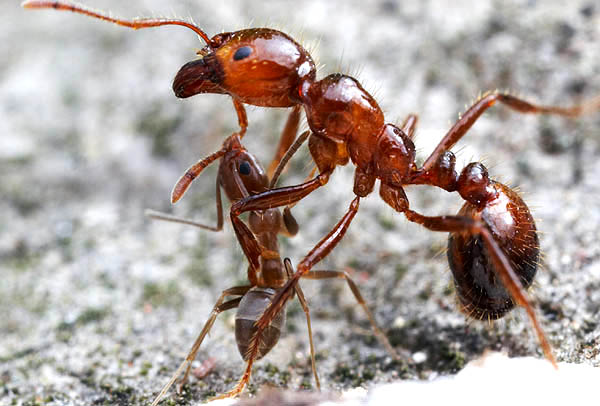© Edgardo Carducci
An Introduction to argentine ants
Argentine ants have recently been at the top of ant news.
In their native countries, they normally outbreed to ensure genetic diversity. However, since they have successfully invaded other countries something strange is happening. The princesses are loosing their wings at birth, they then either act as workers or mate with directly related drones. The nuptial flight never occurs. This means that the new colony will be genetically identical to the original colony, and so they can live together and work as an ever expanding super colony.
Three distinct super colonies have been discovered in America, Japan and Europe spanning distance over 6000 Km or 3700 miles. Individuals from each super colony have been introduced together by myrmecologists, the ants acted as if they were from the same colony. The researches concluded that these ants have made a single global super colony. See the video below for more info.
Scientific names
Linepithema humile.
Distribution
Argentine ants originated in South America including Argentina, Uruguay, Paraguay, and southern Brazil.
They have since become a major invasive species and can be found in Australia, South Africa, New Zealand, Japan, Hawaii, Europe, and the United States.
Habitat
Argentine ants prefer areas with year round mild temperatures. They nest under rocks, pavement, logs, refuse and in holes found in the soil.
Diet
Argentine ants mostly farm honeydew from aphids and scale bugs. They will also eat small insects.
Colony size
With argentine ant colony sizes stretching 6000 Km or 3700 miles wide, the number of individuals is incalculably high.
Queen
Argentine ant queens are typically around 10-12mm, and are dark brown. They are polygyn (multiple queens per colony). They are known to live for up to 7 years.
Workers
Argentine worker ants are around 3mm, brown and are known to live for 6-9 months.
Take a look at the GigaPan link below, here you can really zoom in on one of these ants.
Pest info
As an invasive ant species, the obvious risks apply.
Although these ants do not sting or bite humans, they are aggressive and attack other ant species in large numbers, they have effectively driven away many ant species including red harvester ants and invasive fire ants.
These ants are ranked among the world’s 100 worst animal invaders.








